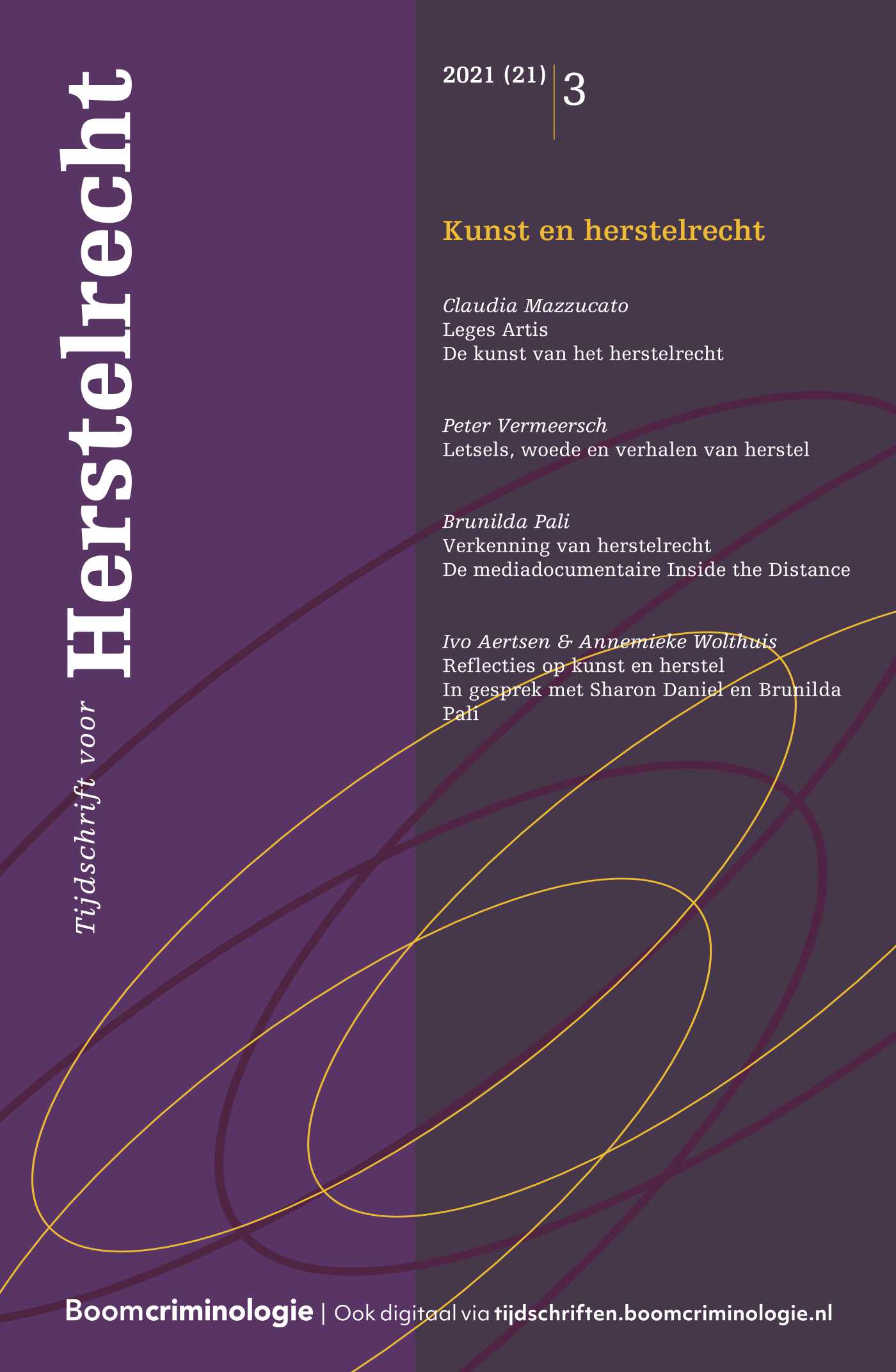|
Adherents to restorative justice are to be commended for systematically questioning whether the manner in which criminal law is currently organised is a good thing. The debate about criminal justice and restorative justice is therefore an important one. It is also a debate which is occasionally marred by a reliance on ideology. In this article, a number of ideological claims are identified and discussed. First, both adherents to criminal law and supporters of restorative justice invoke an ‘origin story’ to defend their view. The origin story of criminal law consists of the idea that without criminal law the world would be a chaos, i.e. the world would resemble the state of nature as depicted by Hobbes. In contrast: the origin story of restorative justice revolves around the idea that without central authority people tend to resolve their conflicts harmoniously. I argue that neither types of origin story can withstand scrutiny. Secondly, in both the context of criminal law (e.g. Antony Duff) and restorative justice (e.g. Jacques Claessen), it is claimed that an individual by violating the rules harms himself as a person. The point of punishment (criminal justice) respectively reparation (restorative justice) therefore is to enable the offender to restore himself and to once again take up his role of citizen. I argue that the claim of self-harm may be based on a primitive worldview. Moreover, I show that this claim can be used to describe criminal law respectively restorative justice in terms that are too harmonious. In this way we lose sight of the coercion and violence that is involved in both contexts. |


Tijdschrift voor Herstelrecht
Meer op het gebied van Mediation en herstelrecht
Over dit tijdschriftMeld u zich hier aan voor de attendering op dit tijdschrift zodat u direct een mail ontvangt als er een nieuw digitaal nummer is verschenen en u de artikelen online kunt lezen.
| Column |
Wel geld, nee, toch geen geldDante in de Lage Landen |
| Auteurs | Jent Bijlsma |
| Auteursinformatie |
| Redactioneel |
Herstelrecht en strafrecht: naar een compendium van dwalingen? |
| Auteurs | Bas van Stokkom |
| Auteursinformatie |
| Artikel |
Ideologische vertekeningen binnen straf- en herstelrechtOorsprongsverhalen en de dwaling van zelfbeschadiging |
| Trefwoorden | Oorsprongsverhalen, Zelfbeschadiging, Chaos, Harmonie |
| Auteurs | Vincent Geeraets |
| SamenvattingAuteursinformatie |
| Artikel |
Over ‘westerse’ dialectiek en ‘oosterse’ mystiekReflectie op ‘ideologische vertekeningen’ |
| Trefwoorden | Dialectiek, Mystiek, Oorsprongsverhalen, Zelfbeschadiging |
| Auteurs | Jacques Claessen |
| SamenvattingAuteursinformatie |
|
This contribution contains a response to the article of Vincent Geeraets included in this issue. Following the structure of Geeraets’ article this reflection consists of two parts: 1. Stories that deal with the origin of criminal law and restorative justice and 2. The perspective of the offender as someone who harms himself in the views of Duff and Claessen. In this contribution these parts are connected through the concepts ‘dialectics’ (ad 1) and ‘mysticism’ (ad 2) – i.e. concepts in which ‘Western’ respectively ‘Eastern’ Enlightenment seem to intertwine. |
| Artikel |
Begrip, rust, recht en regie: naar een verklaringsmodel voor de werking van herstelbemiddeling |
| Trefwoorden | Verklaringsmodel, Effecten, Recidivevermindering, procedure, attributie |
| Auteurs | Bas Vogelvang en Gert Jan Slump |
| SamenvattingAuteursinformatie |
|
Based on a literature research and program evaluation of the practice of Victim in Focus (Slachtoffer in Beeld) in 2013, two issues are addressed: What are the possible effects of victim offender mediation? Which active mechanisms will cause or contribute to these effects? The authors describe the current context and developments in The Netherlands concerning restorative justice and then describe the effects and possible active mechanisms such as satisfaction, diminishing fear, anger and shame, information and consent, procedural justice, reduction of recidivism, compliance. In a synthesis of active mechanisms they present four domains or mediating factors: from incomprehension to comprehension (cognitive restoration); from unease to ease (emotional restoration); from injustice to justice (moral restoration); from powerless to powerful feelings (restoration of control). The victim offender mediation as a ritual has an impact or is supposed to have an impact on these four domains for both victims and offenders. Within the four domains four activities or interactions within victim offender mediation are presented: creating understanding through inter-subjectivity; expression of fear, trauma and shame; doing justice by excuses/apologies and restorative actions; regaining self control. Further research is needed to validate the model and to get more insight in essential or primary and secondary aspects in the explanation of the impacts of victim offender mediation. |
| Boekbespreking |
Herstelrechtelijke rituelen: maximalisatie van emoties? |
| Auteurs | Bas van Stokkom |
| Auteursinformatie |
| Casus |
In memoriam Herman (Thomas) Bianchi (1924-2015)‘As it gewelt begjint, hâldt it rjocht op’ (Als het geweld begint, houdt het recht op) |
| Auteurs | Jacques Claessen |
| Auteursinformatie |
| Casus |
Innovatie: onderzoek naar online herstelbemiddeling |
| Auteurs | Manon Elbersen en Sven Zebel |
| Auteursinformatie |
